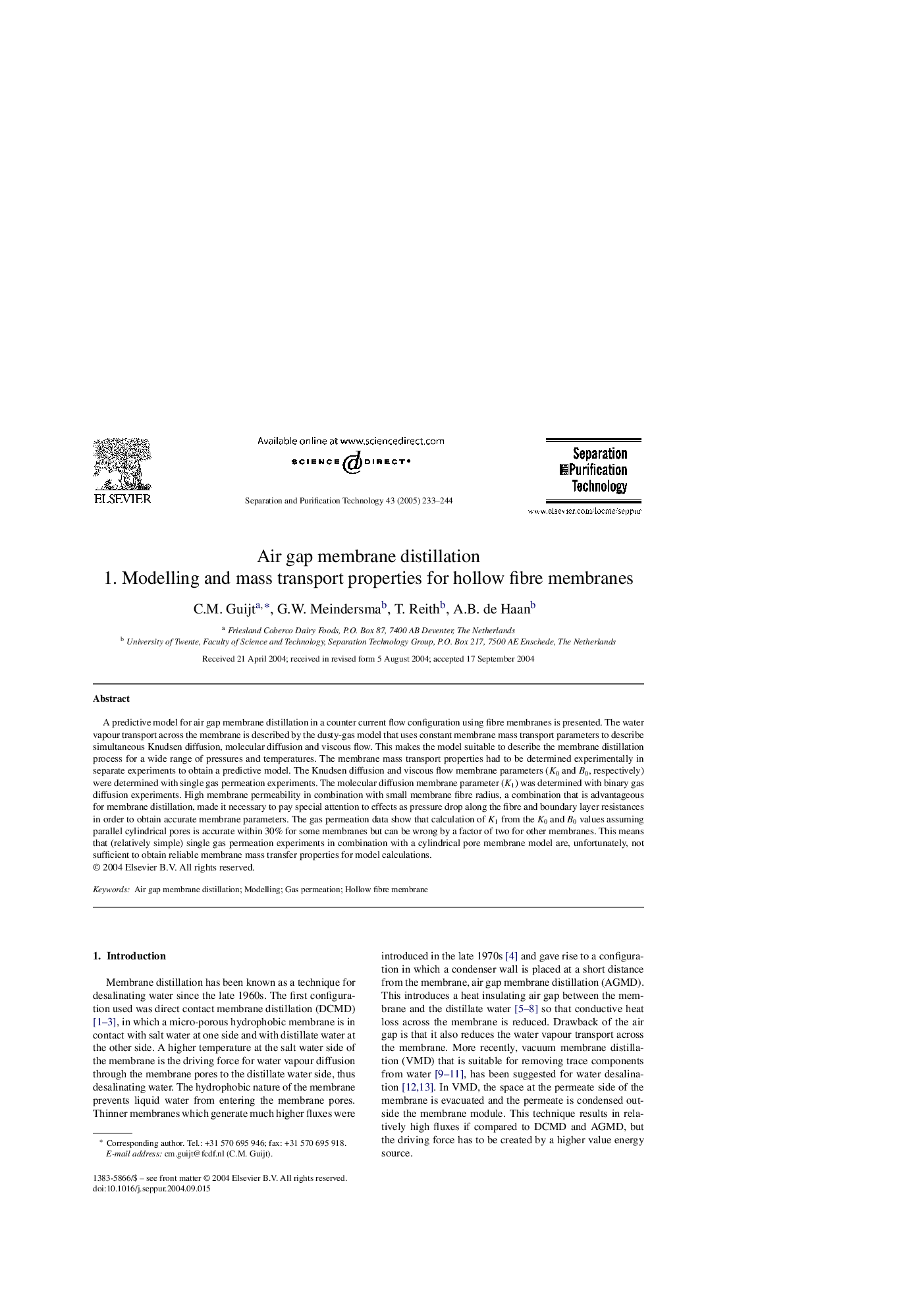| Article ID | Journal | Published Year | Pages | File Type |
|---|---|---|---|---|
| 10389827 | Separation and Purification Technology | 2005 | 12 Pages |
Abstract
A predictive model for air gap membrane distillation in a counter current flow configuration using fibre membranes is presented. The water vapour transport across the membrane is described by the dusty-gas model that uses constant membrane mass transport parameters to describe simultaneous Knudsen diffusion, molecular diffusion and viscous flow. This makes the model suitable to describe the membrane distillation process for a wide range of pressures and temperatures. The membrane mass transport properties had to be determined experimentally in separate experiments to obtain a predictive model. The Knudsen diffusion and viscous flow membrane parameters (K0 and B0, respectively) were determined with single gas permeation experiments. The molecular diffusion membrane parameter (K1) was determined with binary gas diffusion experiments. High membrane permeability in combination with small membrane fibre radius, a combination that is advantageous for membrane distillation, made it necessary to pay special attention to effects as pressure drop along the fibre and boundary layer resistances in order to obtain accurate membrane parameters. The gas permeation data show that calculation of K1 from the K0 and B0 values assuming parallel cylindrical pores is accurate within 30% for some membranes but can be wrong by a factor of two for other membranes. This means that (relatively simple) single gas permeation experiments in combination with a cylindrical pore membrane model are, unfortunately, not sufficient to obtain reliable membrane mass transfer properties for model calculations.
Related Topics
Physical Sciences and Engineering
Chemical Engineering
Filtration and Separation
Authors
C.M. Guijt, G.W. Meindersma, T. Reith, A.B. de Haan,
